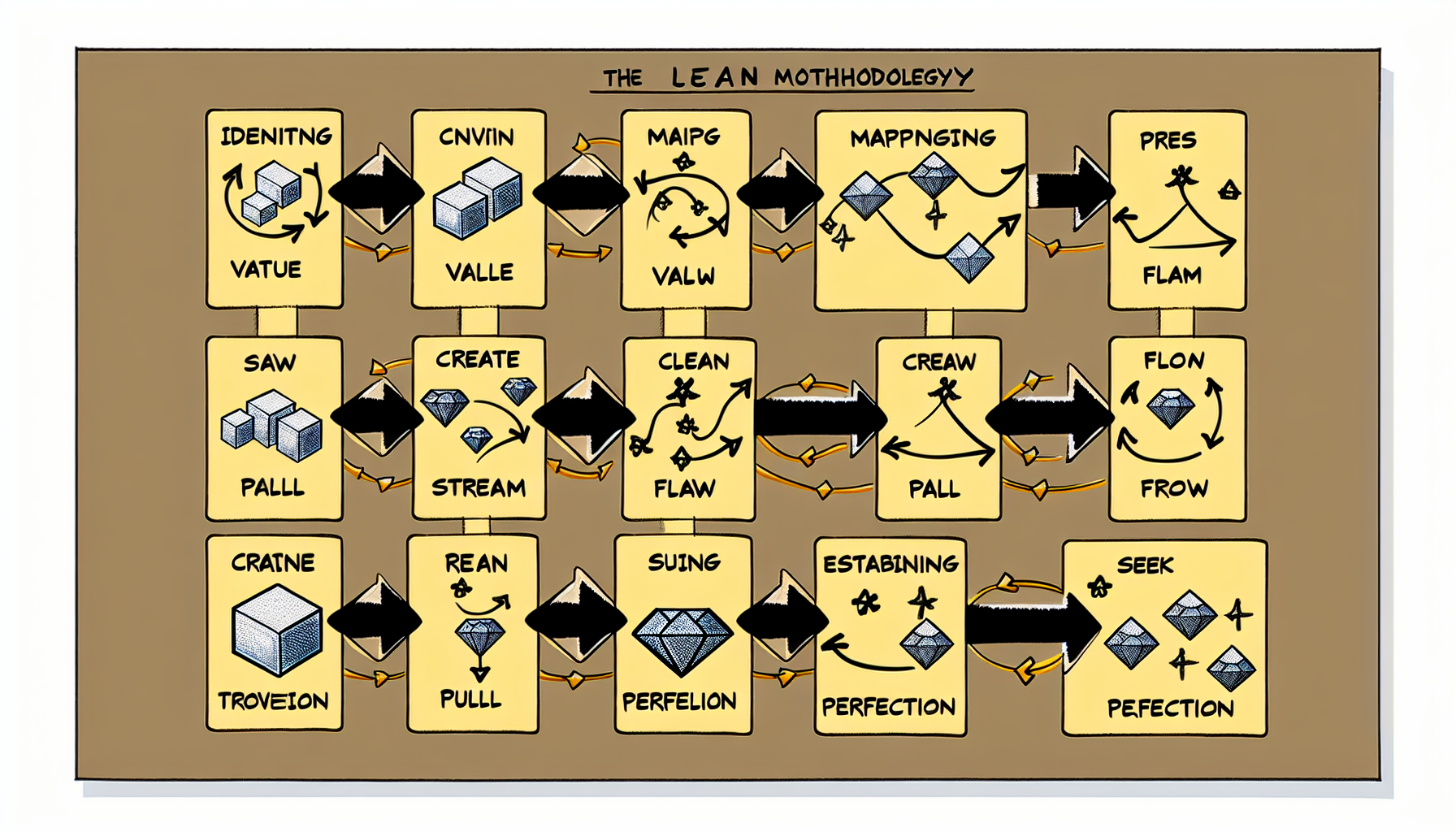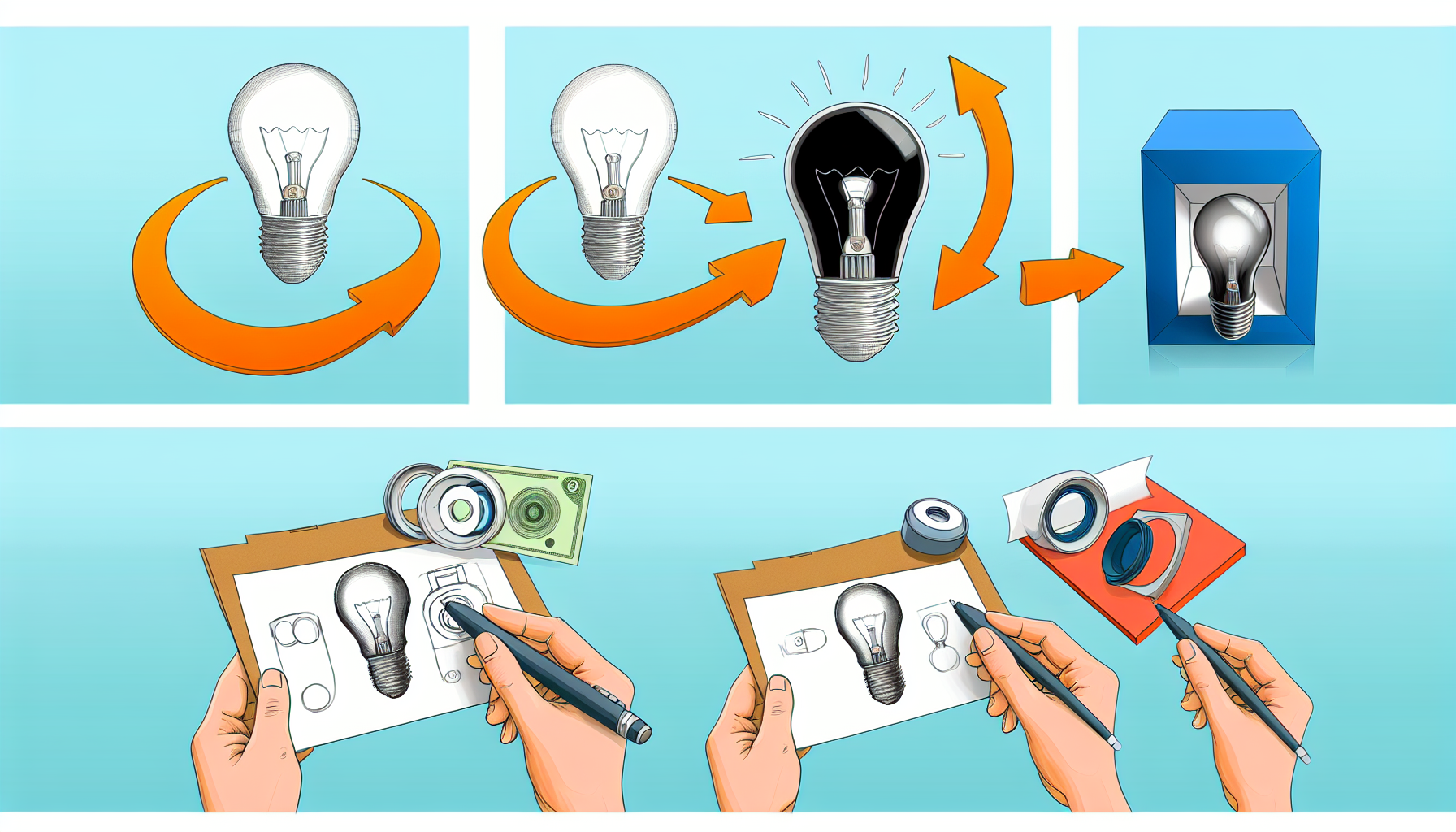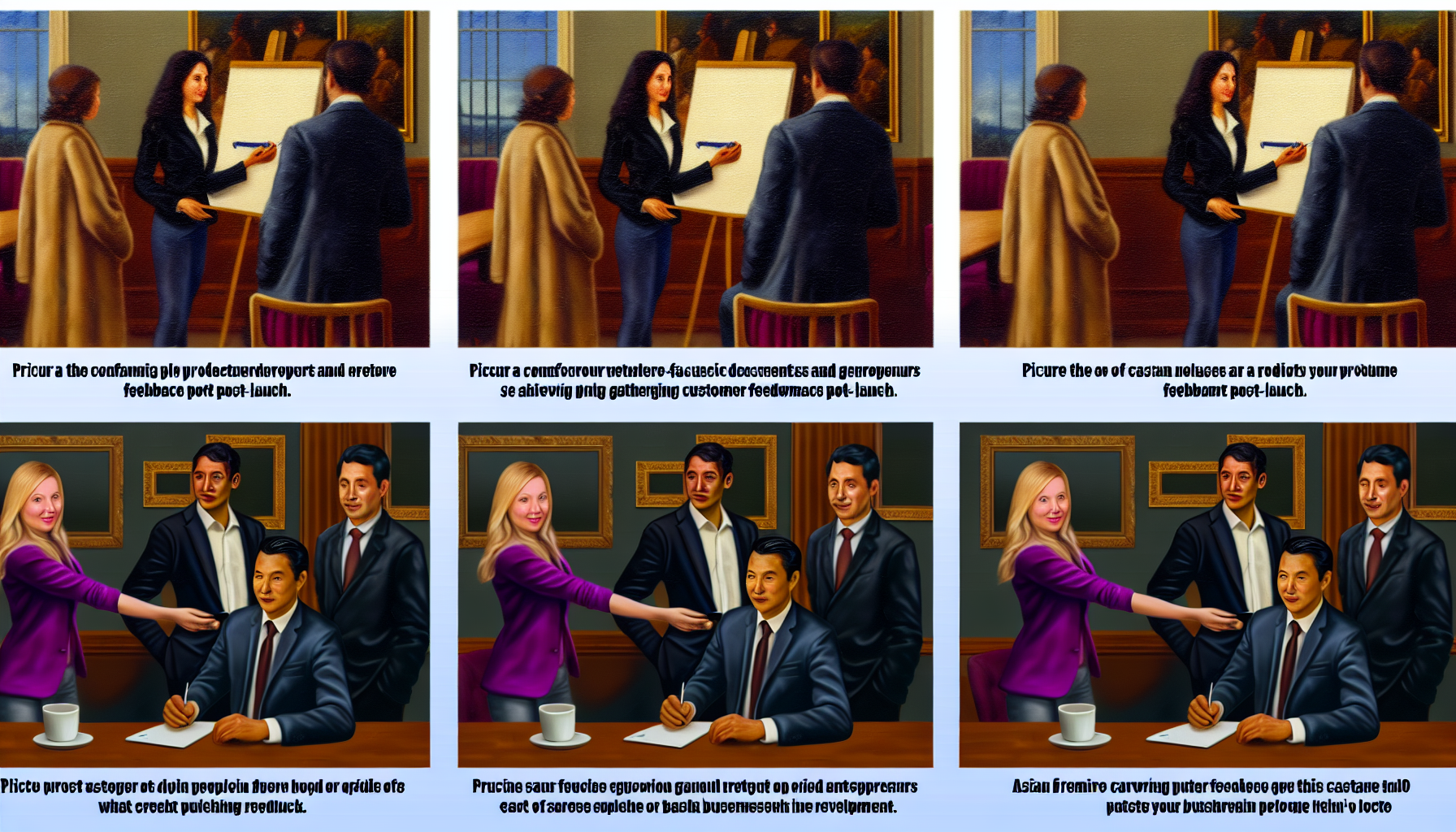Discover how to develop a Minimum Viable Products (MVP) to test your business idea effectively. Learn key strategies to validate your concept and drive success.

A Minimum Viable Product (MVP) is a foundational concept in the realm of product development and startup strategy. Essentially, an MVP is the most streamlined version of a product that is sufficient to meet the needs of its earliest users while still allowing the product team to gather valuable feedback for further iterations. This approach significantly aids startups in validating their business ideas without committing extensive resources to a fully developed product.
The significance of an MVP lies in its ability to provide startups with an efficient means of testing their business hypotheses in real market conditions. By focusing on core functionalities that solve a particular problem for users, companies can quickly gauge market demand and customer interest. This validation helps establish a stronger foundation for the business strategy while minimizing the risk of failing investments in untested concepts. Smaller resource allocation also enables startups to pivot or adjust their offerings based on user feedback, fostering an adaptive business model that is responsive to market needs.
Furthermore, launching an MVP provides essential insights into customer preferences and behaviors. Startups can collect data on usage patterns, which aids in refining product features, enhancing user experience, and identifying additional opportunities for value creation. This iterative process is not only cost-efficient but also increases the chances of product-market fit, a critical factor in achieving long-term success. Overall, beginning with a Minimum Viable Product is not merely a cost-saving tactic; it is a strategic method for fostering innovation and ensuring that the final product resonates with its intended audience.

The Lean Methodology is a systematic approach to product development that emphasizes efficiency and maximizing value while minimizing waste. Central to this methodology are three key principles: build, measure, and learn. These principles provide a framework that can significantly enhance the process of developing a Minimum Viable Product (MVP). By prioritizing these steps, startups can effectively streamline their product development cycles.
Initially, the focus is on the “build” phase, where entrepreneurs create a simplified version of their product. The essence of an MVP is to include only the core features necessary to satisfy early adopters while testing critical business assumptions. This approach enables startups to enter the market quickly, allowing them to gather real-world insights without the lengthy timeline often associated with comprehensive product development.
Following the build phase, the next step involves measurement. Startups collect data from actual users interacting with the MVP. This data is crucial as it provides concrete insights into user behavior and preferences. By analyzing this information, businesses can assess whether their initial assumptions were correct and determine which features resonate with users. This phase is a critical component of the Lean Methodology, as it facilitates informed decision-making—enabling businesses to pivot or persevere based on tangible feedback.
Finally, the “learn” phase allows startups to refine their product based on the measurements taken. Insights gathered from users should guide developers in enhancing existing features or adding new ones. This iterative process is central to the Lean approach, promoting continuous improvement and agility. By embracing the cycle of building, measuring, and learning, startups can not only validate their business ideas but also adapt swiftly to market demands—ultimately positioning themselves for greater success in the competitive landscape.
Identifying your target market is a crucial step in developing a Minimum Viable Product (MVP), as it lays the groundwork for subsequent product development and marketing strategies. Conducting market research effectively helps entrepreneurs gather insights into potential customers, which is essential for ensuring that the MVP adequately addresses their needs and pain points. This process often involves a combination of qualitative and quantitative research methods.
One of the first techniques to consider is surveys, which allow for the collection of data directly from potential users. By designing well-structured questionnaires, entrepreneurs can assess customer preferences and distinguish between their most pressing challenges. Surveys can be distributed through various channels, including social media, websites, and email, thereby reaching a broad audience effectively.
Another valuable technique is conducting interviews and focus groups. These methods enable deeper interactions with participants, allowing for nuanced discussions that capture the subtleties of customer experiences and expectations. By engaging directly with users, entrepreneurs can identify specific features that resonate with their target audience, ensuring that the MVP aligns with user needs.
Additionally, analyzing competitors can provide insights into the target market. By studying the audience that competitors attract, businesses can identify gaps where their MVP could offer superior value. Understanding competitor strengths and weaknesses enables entrepreneurs to differentiate their product effectively.
Online analytics and social media engagement also serve as powerful tools in the identification of target markets. These platforms provide demographic data and behavioral patterns that highlight which segments of the audience are likely to embrace the new product. By leveraging this data, entrepreneurs can fine-tune their understanding of customer preferences.
In conclusion, identifying the target market through comprehensive market research can significantly influence the success of an MVP. By employing various methodologies, businesses can develop insights that ensure their product offerings effectively meet the demands of their intended audience.
When developing a Minimum Viable Product (MVP), identifying the essential features is crucial. The goal is to create a product that addresses the core needs of your target audience while minimizing complexity. To achieve this, it is important to engage in thorough customer feedback and market research. This enables entrepreneurs to recognize what potential users prioritize, ensuring that the product delivers real value.
Start by gathering insights through surveys, interviews, or focus groups with potential users. Ask open-ended questions to uncover their pain points related to the problem your MVP aims to solve. Analyzing this feedback helps in categorizing features into two main groups: ‘must-haves’ and ‘nice-to-haves’. Must-have features are those critical to the MVP’s functionality and user experience, while nice-to-have features, though valuable, are not essential at the MVP stage.
Once you have identified must-have features, prioritize them based on factors such as customer demand, feasibility, and alignment with your business goals. Employing methods like the MoSCoW technique (Must have, Should have, Could have, Won’t have) can facilitate this prioritization process. This structured approach ensures that your MVP focuses on delivering a product that solves the users’ primary issues effectively while also allowing for further enhancement based on user feedback post-launch.
Additionally, keep in mind that an MVP is not stagnant; it is a starting point. Collect data on how users interact with the product and continuously iterate on the features based on user experience and feedback. This iterative process will guide you in refining the product, ultimately leading to a robust offering that meets evolving customer needs and market demands.

Prototyping is a critical stage in the development of a Minimum Viable Product (MVP), transforming abstract ideas into tangible representations. This process involves creating a prototype, which serves as the initial design that allows teams to evaluate both functionality and user experience. There are several methods available for prototyping, each with its own set of advantages and applications.
One common method is wireframing, which involves designing basic layouts that illustrate the structure of the MVP without the distraction of detailed graphics. Wireframes are essential for mapping out user flows and understanding how users will interact with the product. They can be created using various tools, such as Balsamiq or Axure, which allow designers to focus on functionality rather than aesthetics at this early stage.
Mockups represent another prototyping method, offering a more polished visual representation of the product. Unlike wireframes, mockups incorporate actual design elements such as color, typography, and image use to provide a closer approximation of the final product. Tools such as Figma and Sketch can be instrumental in creating high-fidelity mockups that help stakeholders visualize the MVP more effectively.
Furthermore, combining low-fidelity prototypes (like wireframes) with high-fidelity prototypes (like mockups) provides a comprehensive approach to design. This progression facilitates feedback collection, allowing teams to iterate on their designs based on user testing and stakeholder input. The iterative nature of prototyping ensures that any identified issues can be addressed early, preventing more significant problems later in the development process.
In summary, the transition from idea to initial design is a significant step in developing an MVP. The choice of prototyping methods and tools influences the ability to effectively evaluate user experience and functionality, setting the foundation for a successful product launch.
Prototype testing is a critical phase in the development of a Minimum Viable Product (MVP), as it allows businesses to validate their product quickly and affordably. The first step in executing effective prototype testing is to create realistic test scenarios that reflect potential user interactions with the MVP. These scenarios should encompass key functionalities and highlight various use cases, enabling testers to assess how well the product performs under different conditions.
Once the test scenarios are established, the next step entails selecting appropriate participants. It is advisable to recruit individuals who closely resemble the target audience or existing customers. This ensures that the feedback received during testing is relevant and constructive. Depending on the MVP’s nature, it may be beneficial to have a diverse group of participants to uncover different perspectives and user behaviors. Additionally, consider conducting the tests in various environments to further mimic real-world usage.
During the testing sessions, observers should be prepared to document the interactions meticulously and gather qualitative feedback. This might involve recording participants’ reactions, noting any difficulties they encounter, and soliciting their opinions on specific features of the MVP. Surveys or structured interviews can be useful tools in this context, allowing participants to share detailed insights about their experience.
After compiling data from the prototype testing, the next phase is analysis. Assess the feedback to identify patterns or recurring issues that can guide refinements. This feedback loop is essential; it fosters an environment of continual improvement, allowing developers to make informed decisions about necessary adjustments to the MVP. By effectively executing prototype testing and diligently analyzing results, businesses can enhance their product, aligning it more closely with user needs and expectations, ultimately increasing the chances of a successful launch.
Once you have undertaken the necessary theoretical groundwork and validated your idea through testing, the process of building your Minimum Viable Product (MVP) begins. This phase is crucial as it transforms your concept into a tangible product. Here we outline actionable steps to guide you through the MVP development process.
The first step in building your MVP is to clearly define its core features. Focus on the functionalities that are essential to solve the primary problem for your target customers. Avoid the temptation to include additional features at this stage; simplicity is key to a successful MVP. By prioritizing essential features, you ensure that resources are utilized efficiently and your timeline remains on track.
Next, it is important to choose the right technology stack for your MVP. The technology stack should align with your project requirements, scalability needs, and the team’s expertise. Common choices for startups include frameworks like React or Angular for front-end development and Node.js or Django for back-end solutions. Selecting the appropriate technology not only impacts your MVP’s performance but also affects its long-term scalability.
Following this, implement effective project management practices. Employ methodologies such as Agile or Scrum, which allow for iterative development and sweeping adjustments based on customer feedback. Regular sprints can help develop your MVP in stages, enabling you to gather feedback and make necessary changes promptly.
Another critical component is ensuring constant communication among team members. Use collaborative tools such as Slack or Trello to facilitate discussions and track progress. This transparency promotes accountability and enhances team cohesion, ultimately leading to a greater likelihood of adhering to business strategies and timelines.
With these steps in place, you are well on your way to successfully launching your MVP, enabling you to test your business idea in the market with minimal resources and maximum learning opportunities.

Once the Minimum Viable Product (MVP) has been launched, gathering customer feedback becomes a critical step in assessing its viability and understanding user experiences. This feedback serves as the foundation for future iterations of the product, enabling businesses to make informed decisions regarding improvements and additional features.
One effective method for collecting user insights is through surveys. These can be distributed via various channels, such as email, social media, or integrated within the product itself. Surveys can be designed to gauge customer satisfaction, usability, and overall experience with the MVP. Utilizing multiple-choice questions, scales, and open-ended feedback allows for a comprehensive understanding of customer sentiments. Tools like SurveyMonkey or Google Forms provide user-friendly interfaces that facilitate survey creation and analysis.
In addition to surveys, direct feedback can be acquired through interviews. Scheduling these calls or meetings with users can yield in-depth insights, as customers may articulate their experiences and suggestions more clearly in conversation. This method also allows for follow-up questions to delve deeper into specific areas of interest, thus providing richer qualitative data. Employing tools like Zoom or Microsoft Teams can help streamline the interview process, enabling businesses to maintain a personal touch.
Furthermore, monitoring analytics from the MVP can reveal critical data about user interactions. Analyzing metrics such as user engagement, drop-off rates, and feature utilization can pinpoint areas for enhancement. Tools like Google Analytics and Mixpanel are instrumental in tracking such metrics, allowing companies to gain quantifiable insights into how their MVP performs in the market.
Ultimately, listening to customer feedback, whether through surveys, interviews, or analytics, is essential in guiding future iterations of the MVP. Engaging with customers post-launch not only helps in refining the product but also fosters a sense of loyalty and trust, as users feel their opinions are valued.
The concept of iterating on a Minimum Viable Product (MVP) is pivotal for startups aiming to succeed in a competitive landscape. Continuous improvement entails regularly refining the MVP based on customer feedback and emerging market trends. This process is essential for ensuring that the product remains relevant and aligned with consumer needs. Startups should adopt a mindset of adaptability, recognizing that initial assumptions about product features or target customers may evolve as real-world data becomes available.
Customer insights play a crucial role in shaping the development of an MVP. By actively engaging with users, whether through surveys, interviews, or feedback forms, startups can gather valuable input that highlights areas of improvement. For instance, if users indicate that certain features are confusing or unhelpful, the startup should prioritize the enhancement or removal of those aspects. Furthermore, the integration of analytics tools can provide startups with quantitative data, illustrating user behavior and preferences. This combination of qualitative and quantitative insights forms the backbone of an effective iterative process.
In addition to customer feedback, startups must stay informed about market changes that could impact their product’s success. This includes keeping an eye on competitors and emerging technologies that may shift consumer expectations. By staying adaptable and willing to pivot when necessary, startups can ensure their MVP continues to meet the evolving demands of the market. Regular evaluation of strategic objectives, along with an openness to adjusting timelines and goals, can foster a culture of innovation and responsiveness within the organization.
Ultimately, the iterative process of refining an MVP based on customer input and market changes is not merely a tactic; it is a strategic approach that can significantly enhance a startup’s chances of long-term success. Embracing this cycle of continuous improvement will enable startups to build stronger products and foster lasting relationships with their customers.

The transition from a Minimum Viable Product (MVP) to a fully developed product marks a significant milestone in a startup’s journey. It’s essential to anchor this transition on empirical evidence and informed decision-making, primarily driven by user feedback, market demand, and performance metrics. Understanding these factors can help entrepreneurs gauge when it’s appropriate to scale their MVP.
Consistent feedback from early adopters is invaluable during this phase. Analyzing user interactions can reveal which features are most beneficial, which may need refinement, and what additional functionalities customers desire. For instance, implementing user surveys or conducting interviews can yield qualitative insights, allowing entrepreneurs to gauge satisfaction and identify areas for improvement. In addition, monitoring user engagement metrics, such as retention rates and churn rates, provides quantitative data that can inform scaling decisions.
Market fit is another crucial consideration during the transition stage. As developers assess how well their MVP meets market needs, they should look for signs of product-market fit, such as increased user acquisition or organic growth. This stage is essential for establishing confidence in scaling efforts. If the MVP demonstrates promising traction and a sustainable user base, it may be time to consider resource allocation for a full product development.
Allocating resources wisely is fundamental to successful scaling. This may involve investing in additional development, marketing strategies, or customer support systems. It’s crucial to ensure that the necessary infrastructure is in place to handle increased user demand while maintaining product quality. As businesses strategize their expansion, an iterative approach that allows for adjustments based on ongoing feedback can be particularly effective. By taking these steps, startups can effectively navigate the transition from MVP to a robust, market-ready product.
Creating a Minimum Viable Product (MVP) is a critical step for startups aiming to test their business idea in a competitive landscape. However, there are common pitfalls that can hinder this process and ultimately impact the product’s success. One significant mistake is overcomplicating the product. Startups often feel compelled to include numerous features or offer extensive functionality in their MVP, driven by the desire to impress potential users. This approach can lead to an overwhelmed user experience, which negates the primary purpose of an MVP — to validate core assumptions with a stripped-down version of the product. A focused MVP should concentrate on the essential features that address a specific problem for target users.
Another prevalent pitfall is underestimating the importance of user feedback. Many startups neglect to seek validation from potential users during the MVP development phase, leading to a misalignment between the product and the actual needs of the market. By failing to engage with users early and often, startups risk building a product that does not resonate with their audience. It is imperative to establish channels for continuous feedback and iterate based on user insights.
Additionally, time management can be a crucial factor. Startups may prioritize speed over quality and rush to release their MVP without sufficient testing and refinement. This approach can lead to poor user experiences, damaging the company’s reputation and eroding trust. It is essential to find a balance between delivering an MVP quickly and ensuring that the product is functional and meets basic quality standards.
By avoiding these common pitfalls — overcomplicating the product, neglecting user feedback, and poor time management — startups can enhance their chances of developing a successful MVP that effectively tests their business idea in the market.

The Minimum Viable Product (MVP) methodology has gained traction in various industries, with many successful startups embracing this approach to refine their business models through customer feedback. One notable case is Dropbox, which initially launched with a simple MVP focusing on core functionality rather than an extensive array of features. By creating a short explainer video, Dropbox showcased its unique file-sharing capabilities, enticing potential users to sign up for a beta release. The positive response provided invaluable insights into customer needs, allowing Dropbox to evolve its offerings based on real user input.
Another prominent example is Airbnb, which began as a basic MVP when its founders rented out an air mattress in their apartment to guests attending a conference. This rudimentary service tested the waters of the short-term rental market and proved crucial in understanding customer preferences and pain points. By soliciting feedback from their initial guests, the founders were able to make targeted improvements to the platform and user experience, ultimately leading to their current status as a globally recognized brand in the hospitality sector.
Furthermore, Instagram’s journey also highlights the significance of the MVP approach. Originally launched as Burbn, the app incorporated various features, including photo sharing and location check-ins. However, upon discovering that users primarily utilized the photo-sharing aspect, the developers pivoted the application’s focus. By stripping down the platform to its essential functions—photo uploading and filters—Instagram rapidly gained traction, attracting millions of users. The feedback-driven iterative process was instrumental in refining the app, establishing it as a market leader in social media.
These examples underline the power of the MVP approach in validating business concepts, showcasing how effective feedback integration and iterative adjustments can drive a startup’s success in highly competitive markets.
Developing a Minimum Viable Product (MVP) is a crucial step in validating your business idea and ensuring that you are on the right path. It allows entrepreneurs to test their concepts in the real world, gather valuable feedback from potential users, and iterate on their products quickly and efficiently. The importance of clearly defining the core features of your product cannot be overstated, as these elements form the foundation of the MVP, enabling you to focus on delivering true value to early adopters.
In your MVP development journey, leveraging various methodologies and tools discussed in this blog will significantly enhance your product testing processes. From agile development frameworks to user experience testing, selecting the right strategies is vital for capturing user feedback and making informed decisions. Furthermore, understanding market trends and user preferences will guide your iterations, helping refine the product and ensuring it meets the demands of your target audience.
As you prepare to embark on your MVP journey, consider creating a roadmap that outlines your development phases. Start small by validating your key assumptions and gradually expand based on real-world insights. Engaging with your early users through surveys and feedback sessions will provide deeper insights into their needs and preferences, ultimately guiding the direction of your product development. Additionally, maintain an adaptable mindset; the ability to pivot based on user feedback can be the difference between failure and success.
In summary, the process of developing an MVP is not only about creating a product but also about learning and evolving. By embracing the methodologies and insights shared throughout this blog, you are equipped to take actionable steps towards refining your business idea. Start today by conceptualizing your MVP and actively engaging with your audience to pave the way for future growth and success.
Find Scholarships Offered by Countries Worldwide for Your Academic Goals.
Chose where you want to study, and we will let you know with more updates.